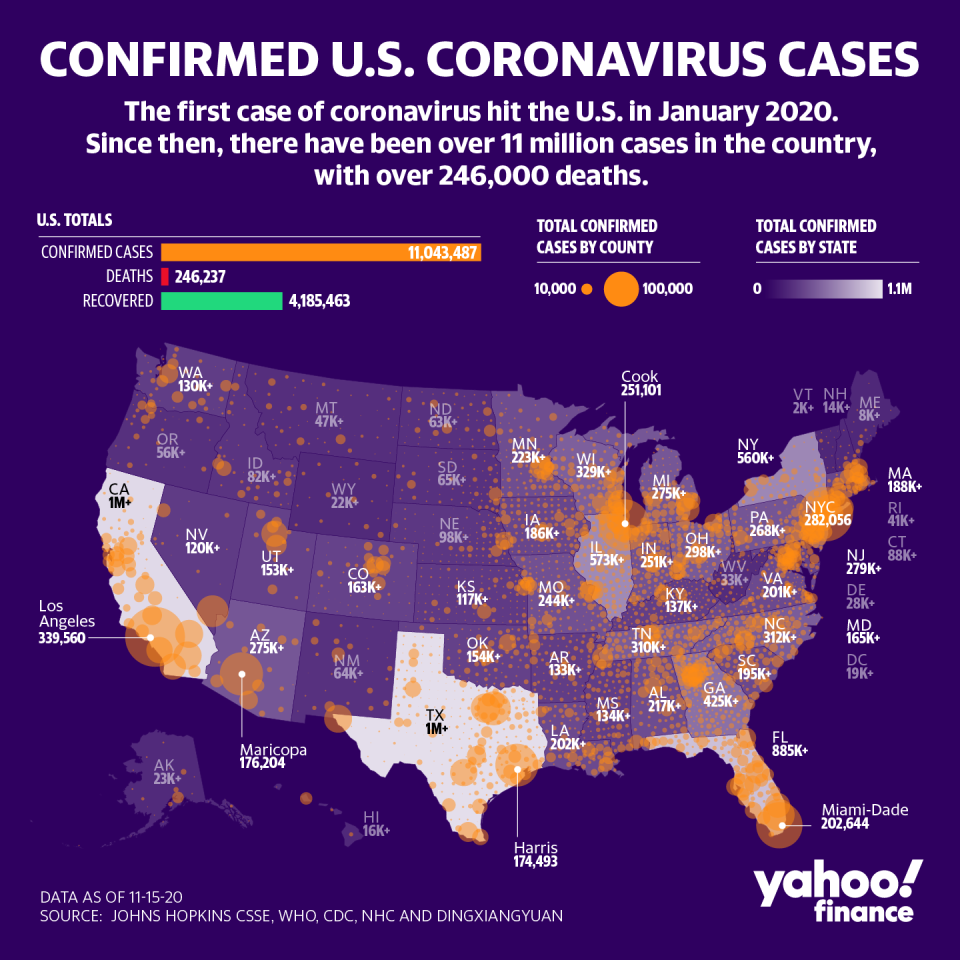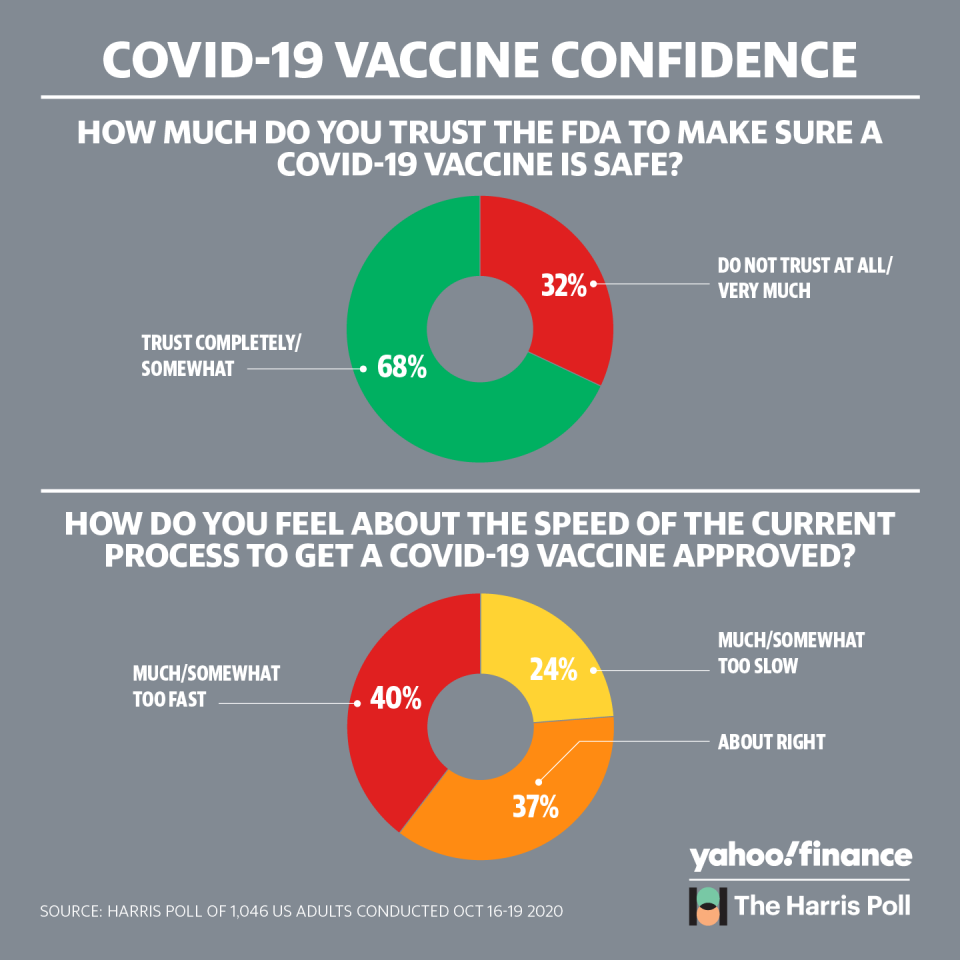‘Around 65%, 70% of the population’ needs to take a 90%-effective coronavirus vaccine, Johns Hopkins expert says
The CDC said it would approve a coronavirus vaccine if it was effective in at least half the people who got it. The first vaccines from both Pfizer (PFE) and Moderna (MRNA) are 90% and 94.5% effective at preventing COVID-19, respectively, in large-scale clinical trials.
There are a lot of logistical questions about manufacturing, storage, and distribution to be answered, but the two vaccines’ anticipated standards of effectiveness raise another about exactly how much of the population needs to be vaccinated to achieve “herd immunity,” in which the virus can’t find hosts to infect and spread itself.
According to Dr. Brian Garibaldi, the medical director at Johns Hopkins’s Biocontainment Unit, the high effectiveness of these first two vaccines means fewer people would have to get the vaccine.
"If it was only 50% effective, we would need even greater numbers to be vaccinated to protect those who are not getting vaccinated for whatever reason,” Garibaldi told Yahoo Finance on Monday.
For herd immunity to happen, a certain number of people have to have immunity in a population, and more efficiency means fewer vaccinations to get that number in theory.
But it’s far more complicated in practice, Garibaldi said, even with the good efficiency results.

“It probably doesn’t change the notion we want to have probably around 65%, 70% of the population [vaccinated] in order to tamp down the virus,” he said.
The reason, he said, is because “the way you calculate herd immunity is not just on characteristics of the virus, but what we’re doing in terms of our own behaviors and actions to try to reduce the spread,” such as wearing masks and social distancing.
Pfizer and Moderna effectiveness has buoyed markets
On Nov. 9, Pfizer announced its vaccine results from a widespread trial of 43,538 participants, finding a 90% effectiveness. Markets roared up on the news and work-from-home stocks dropped.
And on Monday Moderna announced its COVID-19 vaccine has 94.5% effectiveness, which brought more hope that a viable vaccine is coming – and soon – especially given Moderna’s version only requires standard medical refrigeration.
Another factor in determining how many people need vaccination for herd immunity to work and society to reopen fully is how long the immunity conferred by a vaccine lasts. There’s no guarantee it works forever. Though there haven't been many cases of reinfection, some people have gotten coronavirus more than once, Garibaldi said.
Furthermore, this is a global problem and herds do not operate in a vacuum. Borders are open and the U.S. is filled with many small groups that interact together through travel.
"If there is a virus circulating in any country, every country is at risk of potentially having resurgences of the virus,” said Garibaldi. “It’s a global problem. Obviously, the United States is leading in cases and deaths, but there are a number of countries that are not too far behind.”

Another question in all of this is whether enough people will be convinced to take a vaccine. In a Yahoo Finance-Harris Poll survey from October, 63% of Americans said they had concerns about a vaccine, meaning some people may require convincing and a marketing campaign — not a surprise given that many people still erroneously believe COVID-19 is a hoax. (It is not a hoax.)
—
Ethan Wolff-Mann is a writer at Yahoo Finance focusing on consumer issues, personal finance, retail, airlines, and more. Follow him on Twitter @ewolffmann.
A near-record number of people own stocks — but that might not mean much
Beware of ‘banks’ offering huge interest rates on savings accounts
63% of Americans have concerns about a coronavirus vaccine: Poll
Government should collect wealth data just like income: Berkeley economists
For tutorials and information on investing and trading stocks, check out Cashay
Follow Yahoo Finance on Twitter, Facebook, Instagram, Flipboard, LinkedIn, and reddit.